Sugar paste creates the ideal foundation for your edible printing projects because it provides an exceptionally smooth surface that eliminates distortions and irregularities. You’ll achieve superior color retention and vibrancy compared to wafer paper or frosting sheets, thanks to its high sugar concentration that acts as a natural preservative. Its flexibility allows you to conform it to any cake shape while maintaining durability during handling and repositioning. The techniques below will help you maximize these advantages.
Understanding Sugar Paste’s Smooth Surface for Print Quality
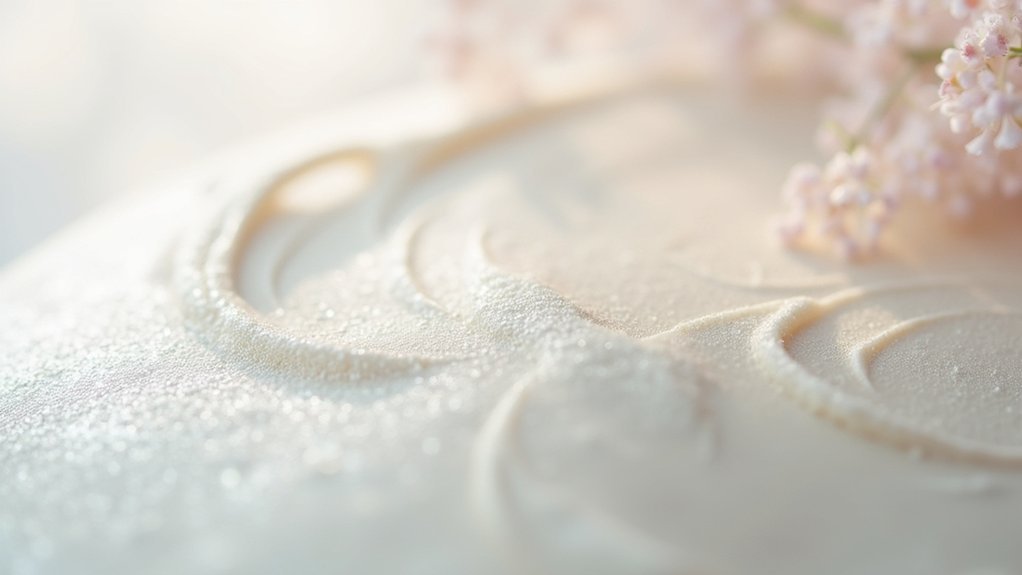
Precision in edible printing starts with your canvas. Sugar paste delivers an exceptionally smooth surface that transforms your printing results from amateur to professional quality.
Unlike textured alternatives, this refined medium eliminates surface irregularities that can distort your printed designs.
When you roll sugar paste to ideal thickness, it creates the perfect foundation for edible printing. The seamless application prevents wrinkles and air bubbles that compromise image clarity.
Your edible inks absorb evenly across this uniform surface, producing vibrant colors and razor-sharp details.
The absence of texture means cleaner edges and superior definition in your printed elements. Every line appears crisp, every color change remains smooth.
This consistent smooth surface guarantees your custom cake decorations achieve that coveted professional finish that impresses clients and guests alike.
How Sugar Paste’s Flexibility Benefits Image Application
Beyond surface quality, sugar paste’s remarkable flexibility revolutionizes how you apply edible images to your cakes. You’ll find it effortlessly conforms to any surface shape, whether curved or angular, preventing distortion during application.
Sugar paste’s extraordinary flexibility transforms edible image application, effortlessly conforming to any cake surface while preventing distortion.
This pliability lets you trim and adjust images perfectly around edges and corners after placement. When you roll sugar paste thin, it creates minimal bulk while maintaining its flexible properties.
This guarantees seamless integration without compromising your cake’s elegant appearance. You won’t worry about cracking or tearing during application, even with intricate designs requiring careful positioning.
The flexibility also enhances color vibrancy by creating an even base that supports your printed designs. You can achieve flawless finishes consistently, making sugar paste your ideal choice for professional-quality edible images.
Color Retention Properties of Sugar Paste Vs Other Materials
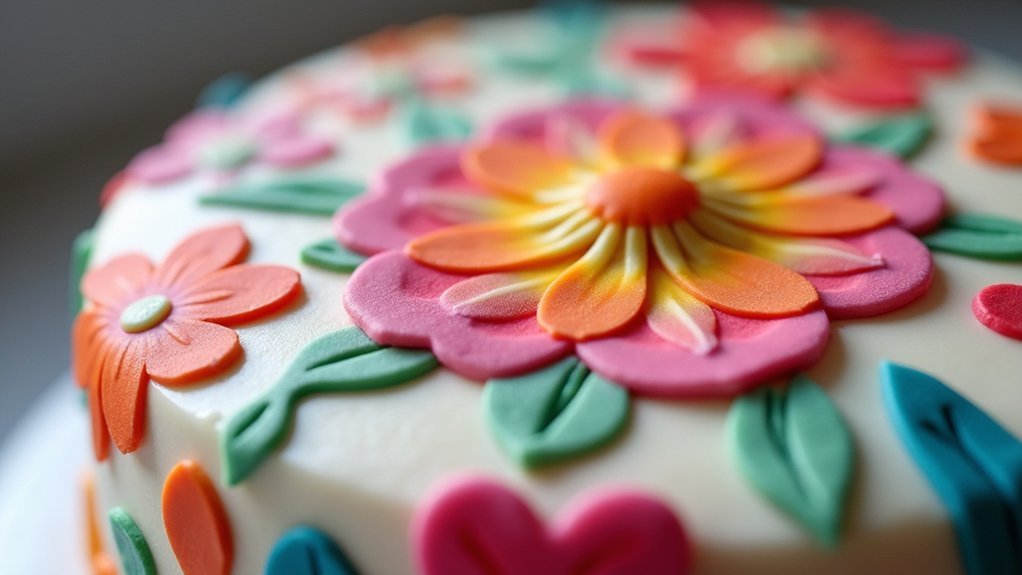
When comparing edible printing materials, sugar paste delivers superior color retention that outperforms alternatives like wafer paper and frosting sheets.
You’ll notice that sugar paste’s high sugar concentration acts as a natural preservative for printed colors, preventing the fading and bleeding that commonly affects wafer paper when it absorbs moisture. The color retention properties of sugar paste guarantee your edible cake designs maintain their vibrancy over time.
Unlike frosting sheets that can blend with buttercream and alter colors, sugar paste provides a stable foundation that preserves your printed image’s integrity.
You’ll achieve photorealistic results with precise color matching because the pliable surface holds detailed prints without smudging. This makes sugar paste ideal for intricate designs requiring sharp, clear images that won’t distort.
Optimal Thickness Control for Edible Printing Results
Achieving consistent thickness in your sugar paste directly impacts the quality of your edible prints, with the ideal range falling between 1/16 to 1/8 inch for maximum clarity and color vibrancy.
This ideal thickness guarantees proper ink adhesion while maintaining the flexibility needed for seamless application.
Here’s how to achieve perfect thickness control:
- Use proper tools – Rolling pins or pasta machines deliver consistent results across your entire sugar paste surface.
- Maintain uniform pressure – Even application prevents thick and thin spots that cause uneven color distribution.
- Choose thinner layers for detail – Intricate designs require more flexible sugar paste that won’t crack during application.
- Avoid thick layers – Excessive thickness distorts images and reduces color intensity, compromising your final result.
Mastering ideal thickness transforms your edible printing outcomes dramatically.
Durability and Handling Advantages During Print Processing
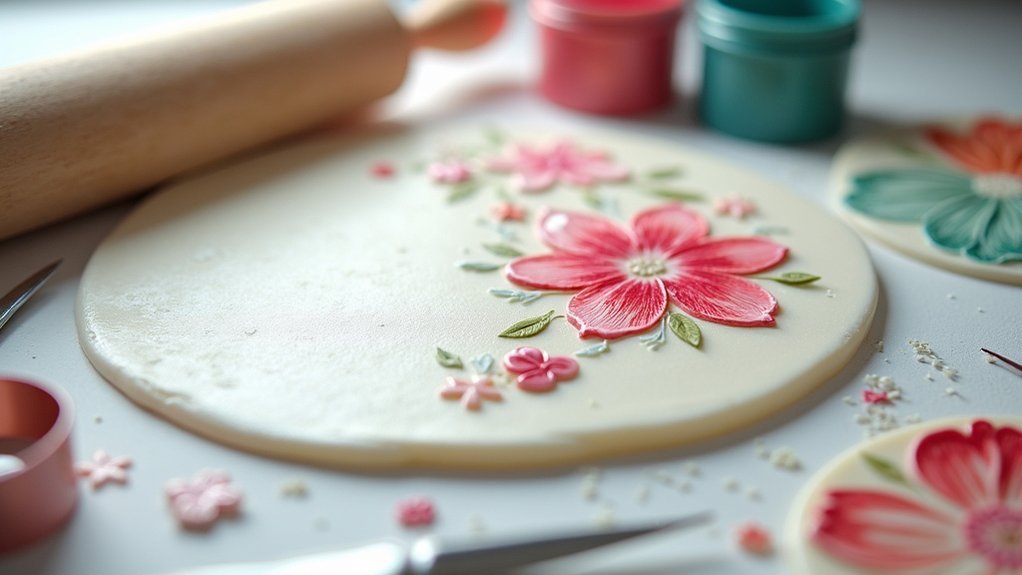
Unlike traditional paper-based substrates, sugar paste delivers exceptional durability that transforms your edible printing workflow from fragile handling to confident manipulation.
You’ll find this sturdy yet pliable surface withstands positioning and repositioning without tearing or wrinkling, giving you complete control during application.
The durability of sugar paste extends beyond basic handling. You can adjust printed images mid-application while maintaining smooth finishes, eliminating concerns about delicate surfaces.
Its thick consistency creates a reliable foundation that prevents ink bleeding and smudging, ensuring your designs remain crisp throughout processing.
When working with moderate moisture from frostings or fillings, sugar paste maintains structural integrity without disintegration.
This resilience lets you apply printed designs smoothly across various cake surfaces, preserving your artwork’s quality from printer to final presentation.
Sugar Paste Compatibility With Different Edible Ink Types
When you’re selecting edible inks for sugar paste printing, you’ll notice that absorption properties vary considerably between water-based and alcohol-based formulations.
The ink type you choose directly impacts color vibrancy results, with some inks producing more saturated prints than others on sugar paste surfaces.
You’ll also need to factor in drying time considerations, as different ink compositions require varying amounts of time to set properly before application.
Ink Absorption Properties
Sugar paste’s smooth, dense texture creates an ideal foundation for edible printing, allowing inks to absorb evenly across the surface without pooling or creating uneven patches. The superior ink absorption properties of sugar paste guarantee your printed designs achieve maximum vibrancy and clarity.
Here’s why sugar paste excels at ink absorption:
- Low moisture content prevents ink from running or bleeding, maintaining sharp edges and fine details.
- Dense surface structure allows controlled ink penetration without oversaturation.
- Smooth finish eliminates texture interference that could disrupt ink flow.
- Quick drying capability locks in colors immediately, preventing smudging during handling.
You’ll find that sugar paste’s unique composition allows both water-based and gel-based edible inks to perform effectively, delivering consistent results every time.
Color Vibrancy Results
Three distinct categories of edible inks—water-based, gel-based, and hybrid formulations—deliver dramatically different color vibrancy results when applied to sugar paste surfaces.
| Ink Type | Color Vibrancy | Absorption Rate |
|---|---|---|
| Water-based | High saturation | Quick penetration |
| Gel-based | Maximum intensity | Controlled absorption |
| Hybrid | Balanced richness | Moderate uptake |
You’ll achieve the most stunning results with gel-based edible inks, which create maximum color intensity on sugar paste’s receptive surface. Water-based formulations offer excellent saturation with rapid absorption, making them perfect for bold, vibrant designs. Hybrid inks provide balanced richness, combining the best properties of both formulations. Sugar paste’s unique composition enhances each ink type’s natural characteristics, allowing you to select the perfect match for your specific design requirements and desired visual impact.
Drying Time Considerations
Although drying times considerably impact your edible printing success, each ink type interacts differently with sugar paste’s moisture-absorbing properties.
You’ll need to take into account these critical factors for best edible printing results:
- Test compatibility first – Always test different edible inks on small sugar paste sections to guarantee proper adhesion and color vibrancy before committing to your final design.
- Allow 24-hour drying minimum – Wait at least 24 hours for sugar paste to dry completely before applying frosting sheets to prevent moisture interference.
- Control humidity levels – Maintain a controlled environment during drying, as excessive moisture impacts ink performance and print quality.
- Prepare surface properly – Confirm your sugar paste surface is smoothed and fully dried to create an ideal canvas that enhances printed design clarity and detail.
Professional Tips for Preparing Sugar Paste for Print Applications
You’ll achieve professional-quality edible prints when you master proper surface preparation and moisture control techniques for your sugar paste.
Start by rolling your paste to a consistent 1/8-inch thickness on a silicone mat, ensuring you’ve created an even canvas that won’t cause print distortions.
Let the surface dry just enough to eliminate tackiness while maintaining the right moisture level for ideal ink absorption.
Surface Preparation Techniques
Five critical steps will determine whether your edible prints achieve professional-quality results or fall short of expectations. Your sugar paste surface must be flawlessly prepared before any printing begins.
Start with these essential preparation techniques:
- Create a perfectly smooth surface – Eliminate every crack and imperfection from your sugar paste using a covered rolling pin to guarantee consistent thickness throughout.
- Apply light cornstarch dusting – Prevent sticking while working, but don’t overdo it since excessive powder interferes with print adhesion.
- Allow proper drying time – Let your sugar paste firm up for several hours to maintain shape and enhance print bonding.
- Add edible glaze coating – Apply a thin layer of clear piping gel to create smoothness and boost color vibrancy in your edible prints.
Moisture Control Methods
Proper moisture control separates amateur edible printing attempts from professional-grade results that maintain crisp detail and vibrant colors.
You’ll need to thoroughly dry your sugar paste before applying any edible prints, as excess moisture causes images to smudge or run completely.
Use a dehydrator or low-temperature oven to remove moisture content while preserving the paste’s structural integrity.
Apply a thin cornstarch or powdered sugar layer to absorb remaining surface moisture before printing begins.
Store your sugar paste in cool, dry environments to prevent moisture absorption that compromises print adhesion and clarity.
Never use sugar paste that’s been exposed to humidity for extended periods, as this creates an unreliable printing surface that won’t hold detailed designs properly.
Frequently Asked Questions
How to Make Sugar Paste Set?
Knead your sugar paste thoroughly, then let it rest for at least 30 minutes in an airtight container. Store it in a cool, dry place away from sunlight and humidity to achieve proper setting.
What Is Very Important in Sugar Paste Making to Make It Elastic?
You’ll need to knead the sugar paste thoroughly until it’s smooth and pliable. Don’t skip adding glycerin for elasticity, and let the paste rest afterward so ingredients can properly meld together.
How to Make Sugar Paste More Pliable?
You’ll make sugar paste more pliable by kneading thoroughly, adding glycerin, warming slightly in your hands, incorporating shortening while kneading, and dusting surfaces with cornstarch instead of icing sugar.
How to Make Sugar Paste Smooth?
You’ll make sugar paste smooth by sifting icing sugar before mixing, kneading with greased hands for 5-10 minutes, letting it rest thirty minutes, and using cornstarch instead of extra icing sugar when rolling.

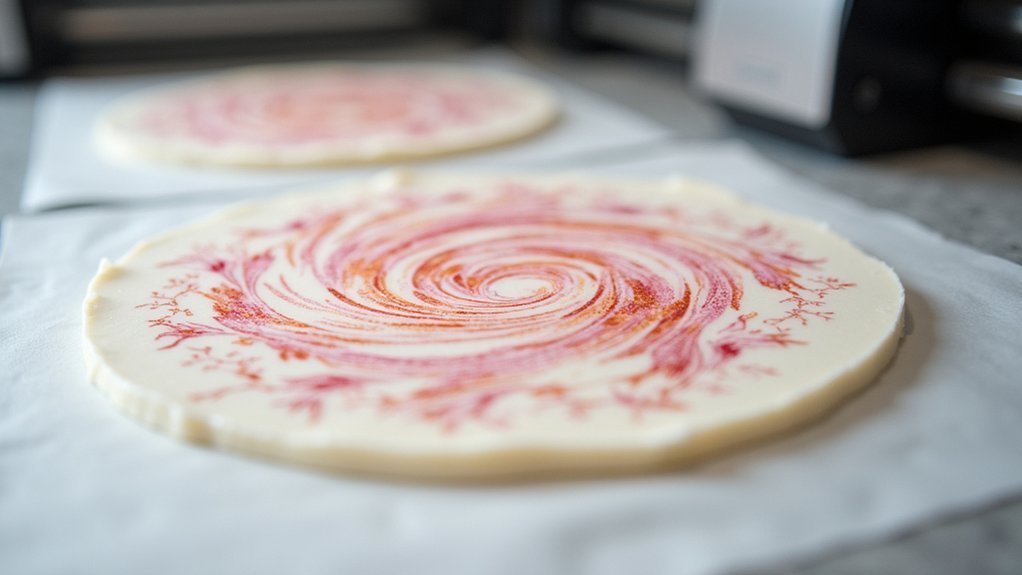
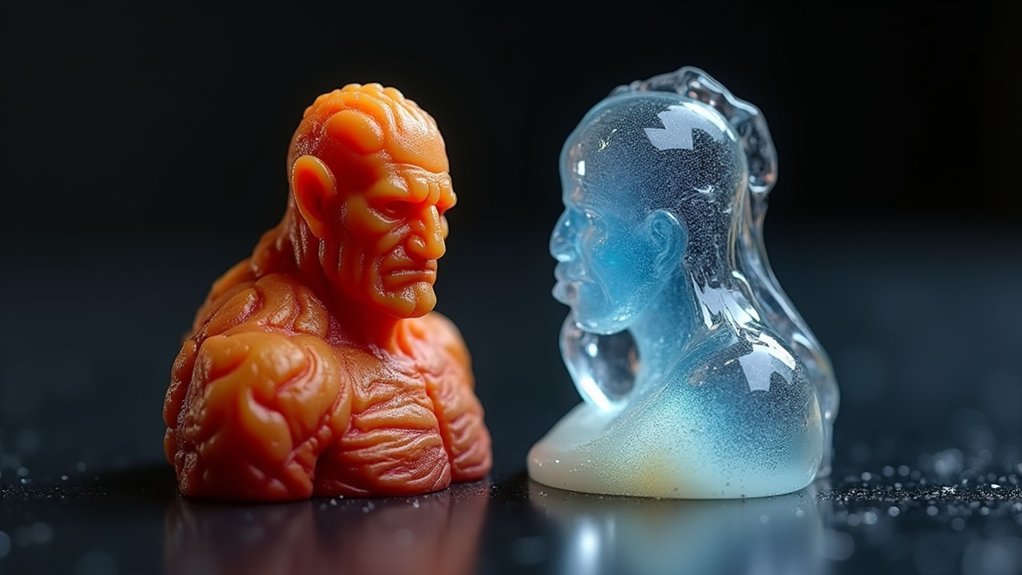
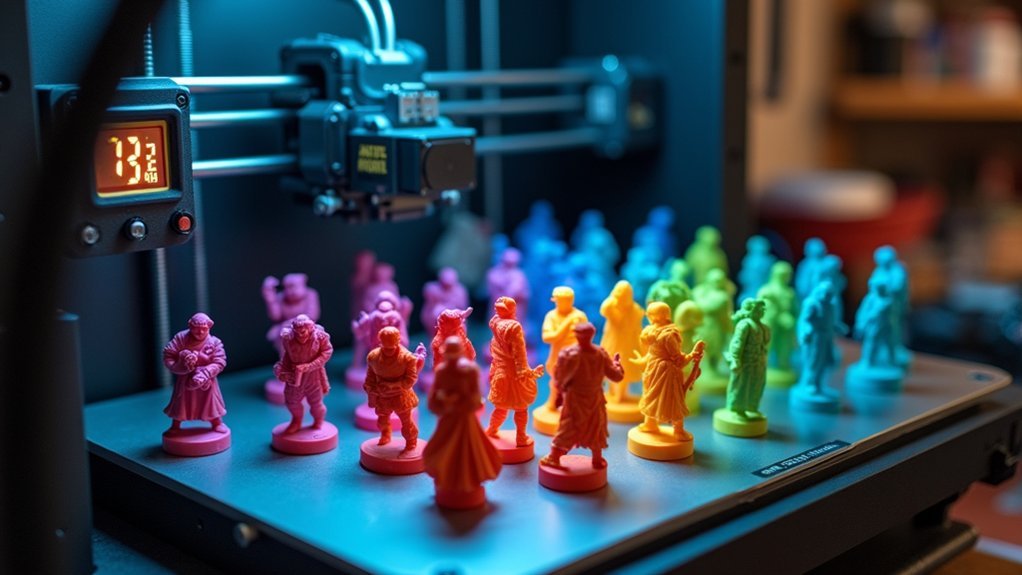
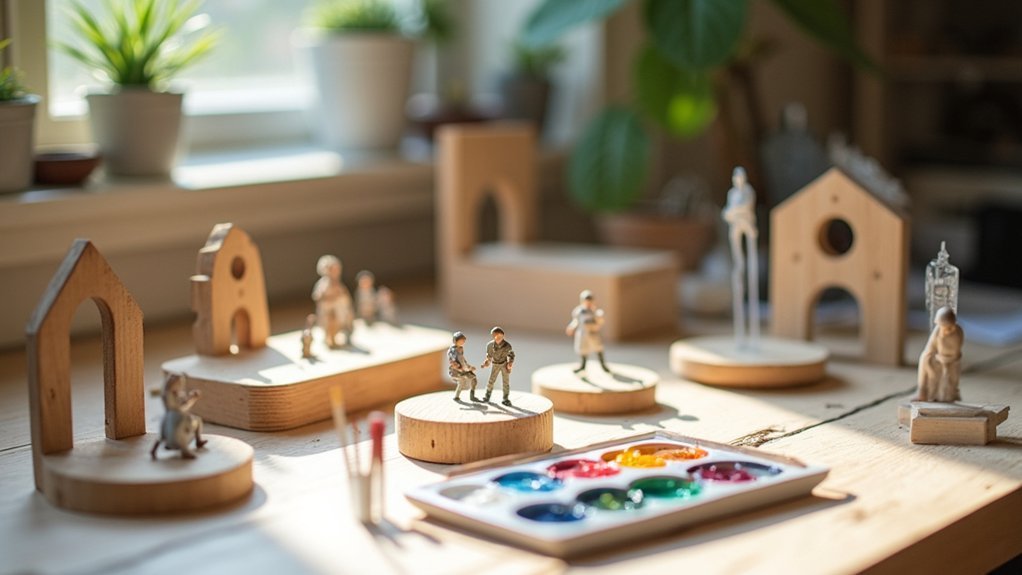
Leave a Reply